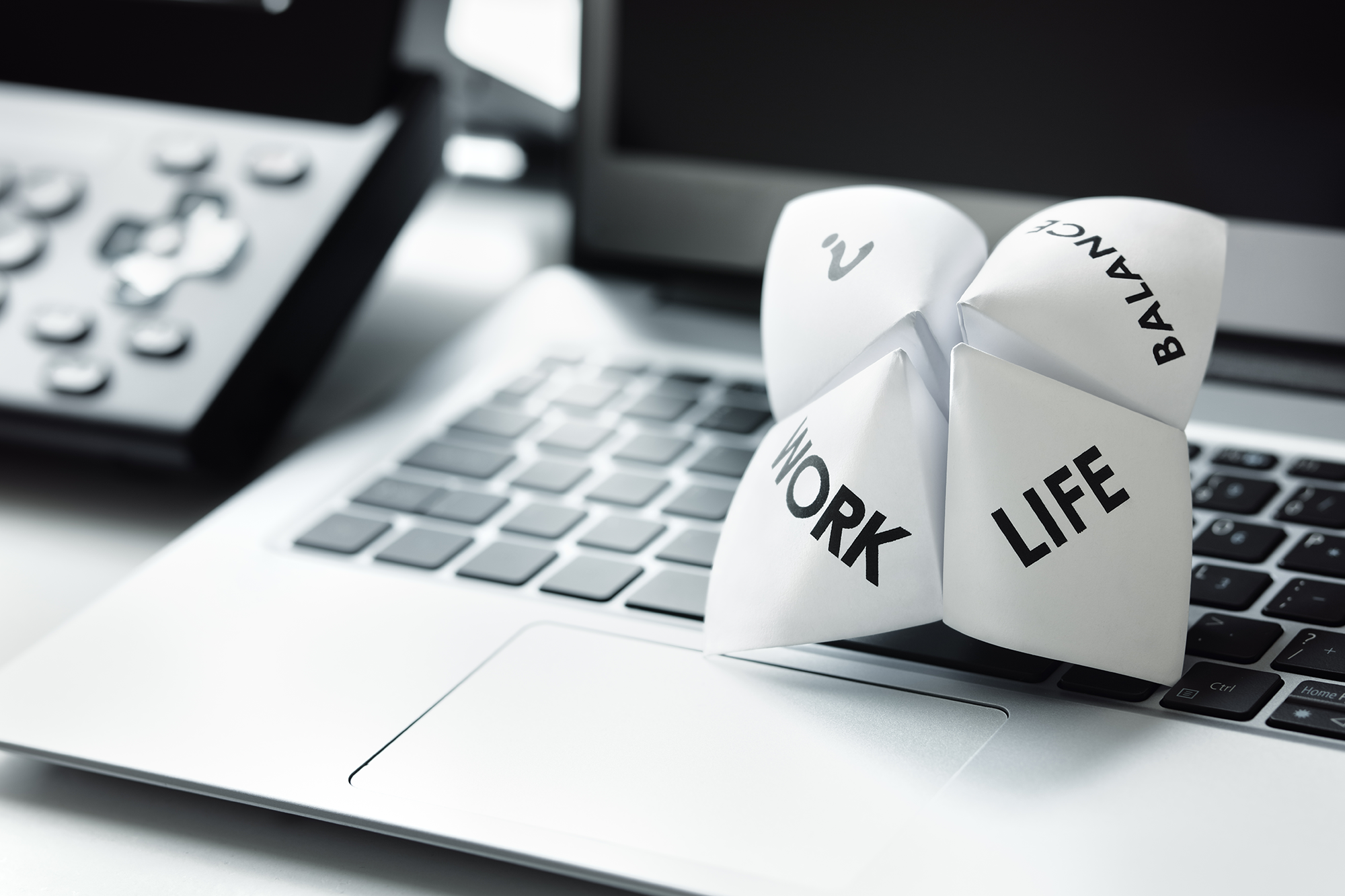The information contained in this article is not intended as legal advice and may no longer be accurate due to changes in the law. Consult NHMA's legal services or your municipal attorney.
The COVID-19 pandemic forced many of us to pivot and rethink how and where we work. With many workplaces going remote, employees’ homes turned into offices, schools and daycare centers. The thought of offering wellness programs for employees simply fell to the bottom of the list for many employers.
As we move toward what we hope will be a post-COVID world, offering wellness programs for your employees should once again become a priority. But which components of wellness programs are most important now? Wellness priorities have shifted as a result of the pandemic, and it’s important for public employers to take a fresh look at the wellness programs you offer and make sure you are providing the resources your employees need as they continue to navigate the ongoing impacts of the COVID-19 pandemic.
In this article, we will explore some emerging trends in workplace wellness and why you might want to incorporate them into your own workplace culture.

A Focus on Mental Health, Stress Management and Mindfulness
The impact of COVID-19 will be felt for many years to come and unfortunately, one of the leading areas of concern is employee mental health. In a recent survey of employers at 494 organizations in the U.S., the global advisory firm Willis Towers Watson found that employers’ biggest well-being challenges amongst their employees are rising stress and burnout, and higher mental health-related claims. In addition, the survey found that improving social connections will remain a challenge as nearly two in five employees are expected to be working remotely at the end of 2021, which makes them more likely to feel disconnected from their teams or organizations.
What is driving this trend? The WillisTowersWatson survey revealed that increased caregiving demands (67%) followed by decreased social connections (61%) and the impact of family and friends who have contracted COVID-19 (57%) are the leading drivers of increased mental/behavioral health issues. To put it simply, many employees are stretched to capacity between work and home and something has to give. While the thought of remote work may have seemed ideal at the beginning of the pandemic, today many people are still struggling with being an employee and caregiver at the same time.
Combine these factors with the increased challenges of finding work/life balance while working from home, and it becomes clear that providing mental health resources to employees will be essential. Looking forward over the next three years, 93% of employers surveyed by Willis Towers Watson say that behavioral health will be a priority.
Financial Wellness and Employee Stress
Another emerging trend in workplace wellness is a focus on financial wellness. Many people were impacted financially by the pandemic and are still trying to recover. Financial worry has a way of becoming a major driver of employee stress. The Willis Towers Watson survey found that 37 percent of employees live paycheck to paycheck and of those, 57 percent say they are struggling financially and have suffered in the last two years, and one in four employees say their finances have worsened over just the last six months. We have all learned to tighten our belts and find ways to stretch our budgets, but this may not be enough for many employees. Providing tools and resources around financial well-being is something many employers may want to consider moving forward.
Maintaining High Productivity
The chronic stress of the ongoing pandemic and all its impacts can also affect employee productivity, and even lead to “presenteeism”--employees may actually be at work but their focus is on something other than work, like financial issues or the stress of being a caregiver or finding balance working from home. Where does that leave employers?
At the end of the day we all want healthy and productive employees who feel like they have the tools and resources available to address all areas of wellness. As we move forward, employers should consider increasing programs with a focus on mental health, stress management and financial wellness. Adding these three components to any established wellness program is a step in the right direction.

What Can Employers Do to Help? 10 Steps for a Healthy, Productive Workplace
Here are a few simple things to consider offering or doing at your worksite today to help improve employee health and well-being.
- Promote your Employee Assistance Program (EAP). Make sure all of your employees are aware of the services available. Create a communication campaign about your EAP to support your employees. If you are a HealthTrust Member Group, your employees, retirees and their dependents and household members can access the LifeResources Employee Assistance Program through their HealthTrust coverage by calling 759.8122.
- Stay connected. Find a way to keep your team connected. Schedule check-in meetings in person (when possible) or virtually to connect and listen to your employees to see how they are doing. Look for signs of stress and burnout and provide resources as needed. Be present! Let your employees know you are there for them and keep reminding them of all the resources they have available.
- Encourage self-care. Remind employees about the importance of physical activity and the positive impacts it can have on physical and mental health. Consider hosting a walking or step challenge to give your employees something fun to focus on.
- Remind employees about the importance of sleep. According to the National Sleep Foundation, “Millions of people suffered from insomnia before the coronavirus, and unfortunately, the pandemic creates a host of new challenges — even for people who previously had no sleeping problems. ‘Coronasomnia’ is a new term that refers to sleep problems related to the pandemic. With increased stress and anxiety, there is a definite impact on our sleep and mental health, and the best way to combat it is to stick to good sleep hygiene practices.” The National Sleep Foundation has many great tools and resources you can use to create a campaign to remind employees of the importance of sleep.
- Remind employees to stay home if they are sick! If we have learned anything from COVID-19, it is that the best place for someone who is sick is not at work but at home – not only for their own health, but to help maintain a healthy workplace.
- Promote positivity. There are many simple ways to do this. One example would be “High 5 Friday,” a day on which employees are encouraged to praise one another for a job well-done. Nothing like a little positivity to end the week.
- Give back. Many people have been impacted by the COVID-19 pandemic. As an organization, you can find a way to contribute to your community and give back together. Help clean up a park or run a food drive for a local shelter. Paying it forward feels good!
- Encourage vacations! Time away from work is healthy and in today’s stressful environment employees should be encouraged to use their time and take a break.
- Consider offering financial wellness resources or consultations. Consult your EAP to see if it has services available. Many employees have been financially impacted by the pandemic and adding a resource for financial wellness might be something employees need right now.
Reminder to Groups that offer HealthTrust Medical Coverage: Your employees, retirees and their dependents and household members can access one free 30- to 60-minute consultation with a financial planner, credit counselor or certified public accountant for each financial issue at no cost to them by calling the LifeResources Employee Assistance Program at 800.759.8122.
- Have FUN. Create an employee wellness board or virtual board and ask everyone to submit pictures of themselves doing something healthy (“Healthy Selfies”) like taking a walk, preparing a nutritious meal, or enjoying family time. If you have many employees working remotely, encourage them to share pictures of at-home co-workers (aka pets) or have a desk decorating contest based on a holiday or a theme. Remember: Laughter is a great stress management tool.
Kerry Horne, M.Ed., is the Assistant Wellness Manager for HealthTrust.
Sources: 2021 Emerging From the Pandemic Survey – Willis Towers Watson
https://www.sleepfoundation.org/sleep-guidelines-covid-19-isolation- National Sleep Foundation
